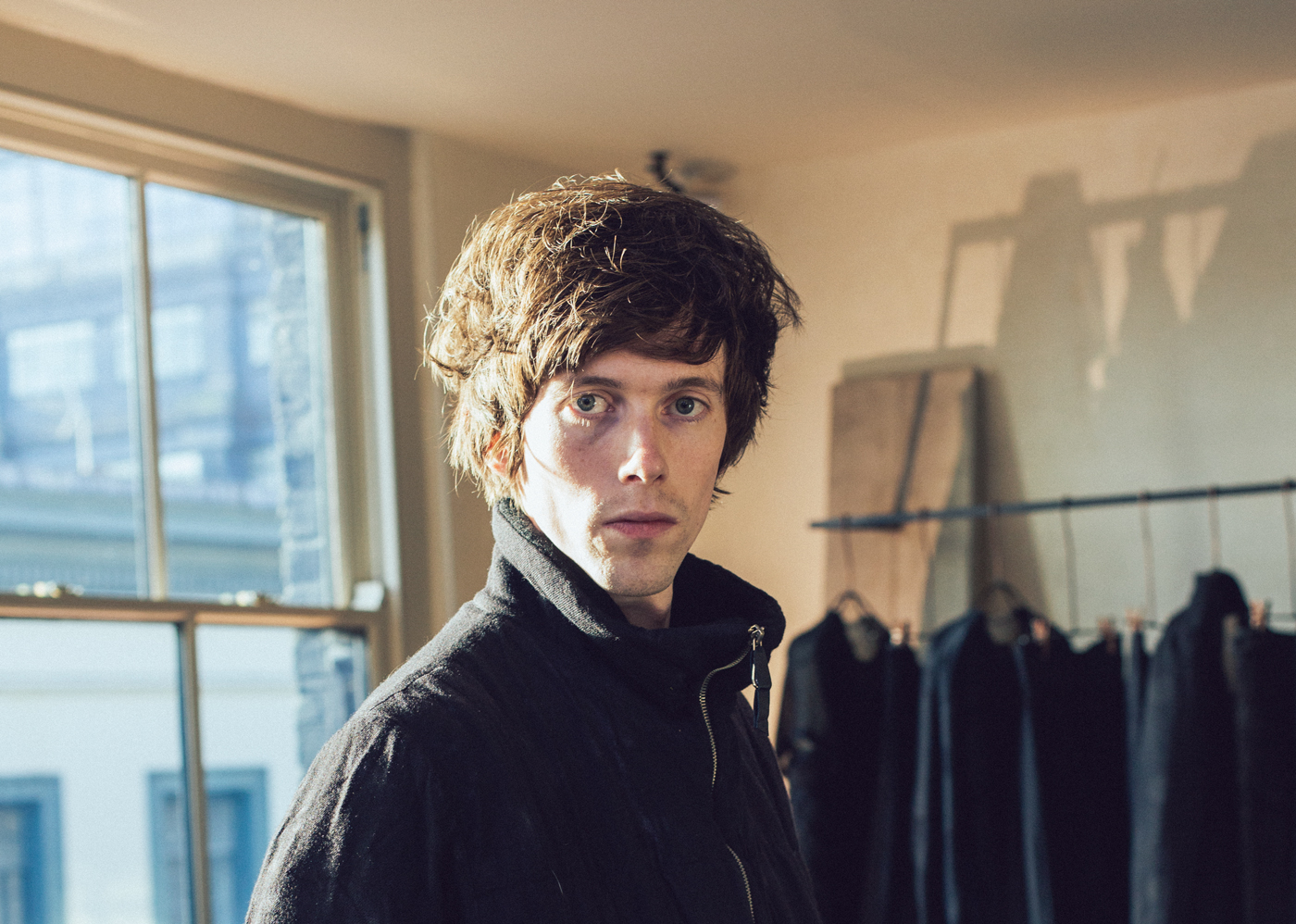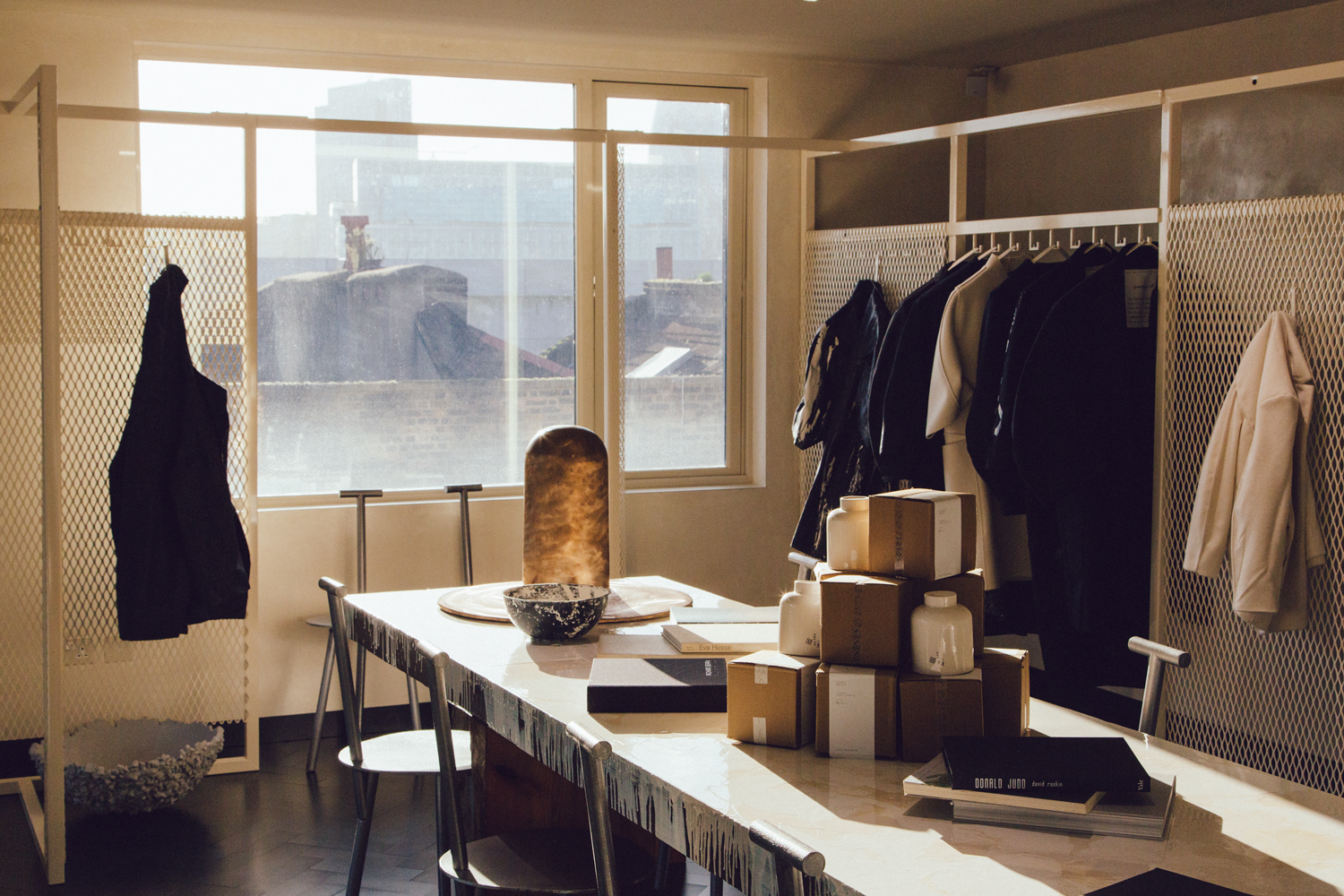Hostem's James Brown on Fashion Retail
Watch the first film from our "What's In Store" series.

Nestled away in East London’s creative centre, Hostem and its founder James Brown are redefining the role of the retail space
As online fashion retail continues its exponential growth, reflected in the steady enhancement of streamlined digital experience, an influx of shopping services, global supply, and simply the ease of buying at the click of a button, it makes sense to ponder the future of bricks-and-mortar outlets. How can physical stores – once mainstays for customers, and in certain cases, institutions – keep up with their online counterparts? What measures are needed to ensure relevance beyond their locality? And how does this affect merchandising?
The answers, of course, lie in experience. While online shopping might speed up the consumption process, it still can’t compete with the tangibility and gratification of real-life shopping; touching a collection as you browse it or exploring a boutique’s atmospheric setting.
James Brown, founder and owner of East London boutique Hostem, understands that in order to sustain and grow his business’s consumer following, he needs to offer something more. While he places the utmost importance on his clientele and their custom, he envisions a retail journey that begins with satisfying the desires of his creative team – the designers, artists, architects and craftspeople who really define how the store is perceived. It’s an approach that has influenced almost every move he’s made in the five years since he opened Hostem on Redchurch Street, Shoreditch, in 2010.


“The initial concept was really to find an environment that could support designers and makers and people that I believed in,” says Brown. “At the time, experience-based retail was lacking in London – there was a huge gap to do something where the focus was more on people and space and an immersive environment.”
While there’s no shortage of premium fashion boutiques in London, Brown’s initial thoughts on the nature of the retail landscape from Hostem’s early days still ring true. As the online fashion retail movement goes from strength to strength, bolstered by the likes of menswear webstore
Mr Porter’s super-savvy editorial and the slick, click-to-buy fashion shoots of men’s online store Oki-ni, bricks-and-mortar shopping has, on the whole, failed to make similar progress. Of course, there are exceptions: Dover Street Market in London and Colette in Paris have both reinvented department-store shopping and spearheaded the en vogue concept store idiom, but between them and a small handful of others, it seems that physical boutiques are for the first time playing catch-up with their web-based counterparts.
People will remember an experience more than they remember a product, so if we can link the two together that adds meaning
Then there’s the Hostem experience: Brown and his small team have envisioned a world of fashion retail where simply buying clothing is secondary to the circumstances in which it is bought. “I often say that product is just what you wrap the experience up in,” says Brown. “As we’ve grown, the emphasis has been on experience; installations, exhibitions, events and dinners.”
Perhaps this ties into contemporary habits, where the general attitude of shoppers has moved away from frivolous expenditure towards more meaningful transactions. It’s interesting to note that Brown does not see Hostem’s competitors as rival fashion stores, but instead galleries, restaurants, theatres and other experiential cultural environments.
Hostem was launched as a menswear boutique. While the casual observer may have noted the characteristically dark and flowing textures, avant-garde silhouettes and even, at times, solemn aesthetic of its stock, Brown did not look to cater for any one customer type in particular, other than for the local artistic (and inherently stylish) community which populated the store’s East London locale towards the end of last decade.

Over the years, Hostem’s reputation as a purveyor of the latest collections by revered designers has grown: examples include Ann Demeulemeester, Boris Bidjan Saberi, Rick Owens, Yang Li and cult Japanese labels Visvim and Mastermind Japan. In the years since its launch, however, the store has outgrown – both physically and conceptually – its founding raison d’être.
In fact, soon after Hostem opened in 2010, Brown and JamesPlumb, the design duo tasked with much of the store’s interior fit-out, also opened The One Room Hotel, an exhibition space by day and a tiny boutique hotel by night, during London Design Festival 2010. Keys to the suite provided access to a considered library and a selection from JamesPlumb’s own film archive, offering an experience like no other.
Since then, the expansions at Hostem have continued. A bespoke tailoring service has opened in the basement and a concession room by fabled Florentine perfumer Farmaceutica di Santa Maria Novella adjoins the ground floor. In recent months, the store has diversified its repertoire into womenswear, building onto naturally lit second and third floors and an airy mezzanine space, providing a counterpoint to the dark, mysterious edge of the lower floors. Most distinctive, and perhaps most impressive of all, is Hostem’s experimental merging of art and fashion.
“It stems from an artist-in-residence approach,” says Brown. “We can give over a space or part of the store to a designer or maker we believe in, and allow them to work and meet people and have discussions and collaborate in that way.”
The first of these notable residencies was filled during 2014 by Faye and Erica Toogood of design practice Studio Toogood. Brown had been friends with the Toogoods for some years and was among the first to talk to them about their planned clothing collection when ideas were still at their formative stages.
A particular point of interest for him was the idea of basing silhouettes on traditional garments from different trades, and the desire to collaborate on a physical level was born. “We wanted to create an immersive environment that showed Faye as a furniture designer, the studio as an interior company, and, obviously, showcased the coats,” says Brown.

Hostem’s mezzanine level was filled with Toogood furniture and design objects, including a sculptor’s table carved from a 150-year-old pine tree which once grew on Brown’s property, and the store also served as a collaborative platform to launch the studio’s first foray into attire. The Toogood collection’s in-store setting, positioned between the mezzanine’s homewares and a suspended, large-scale sculpture in the form of an idealised worker, served to reflect the concept on which the line was founded, representing unity between the worlds of art and industry.
In concept and execution, Hostem sought to explore how a bohemian artist’s atelier might look in 2014, with its mezzanine floor offering
an experience that transcended fashion retail and ventured into gallery-like territory, where every exhibit could be purchased and taken home with the viewer. “I think, in general, people will remember an experience more than they remember a product, so if we can link the two together – if people can buy a Toogood coat and remember the experience they had in-store – that adds meaning for those consuming, and it adds meaning to what we do,” Brown says.
Conceptual experiments aside, the shop’s evolving fit-out is, of course, rooted in function (namely, getting people through the door, and providing talking points once inside), and physical changes will continue to play an integral part in the store’s future direction. The gallery-like environment now plays host to events and gatherings of its community and the creative world; the ability to do this was important to Brown and informed his choice of Redchurch Street as the store’s location.

Traditionally, there has been a mystique that surrounds artists and designers that often creates a barrier between those who design and those who consume. Brown believes that the future of boutique retail will be entwined with the customer’s interaction with the designer.
Validation of this belief took place during last year’s Frieze London art fair, when Hostem played host to Texas-born, London-based artist, Amy Revier, whose predominant medium of choice is artisanal weaving. Over one week in October 2014, Revier and her traditional floor loom took up residence on Hostem’s second floor, weaving textiles that would later become garments, in a performance called Later Alone She Wore Poems For Clothes.
As customers perused the shop floor, the artist flitted between her loom and groups of guests, meeting, greeting and explaining her process, before resuming her work. As Brown explains, these kinds of encounters are only possible because of the relationships the store has with its designers and customers – something larger retailers or online competitors can’t compete with. Revier’s hands-on manifesto aligns perfectly with that of the setting she performed in: “Old ways are retained not out of a sense of nostalgia, but because they serve a function.
I am interested in building from scratch, showing evidence of the hand, and in the plain beauty of well-made things”. On the subject of things well made, Hostem’s next expansion will take it onto the building’s rooftop, where Brown plans to open a kitchen. Typical of the way he’s conducted business to date, this won’t be a conventional cafe concession, but an intimate space where friends and customers of the store can withdraw from the street below and share a drink in an elevated sanctuary. Brown is reluctant to reveal too many details of this next endeavour, but assures us that the venture aligns with the blueprint which has come to define Hostem’s growth over the past five years; a dedicated platform for those who place value on a real experience above all else.



Discussion